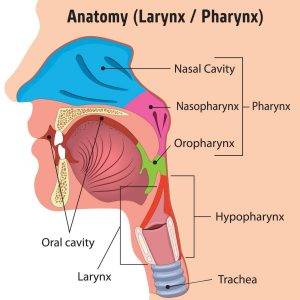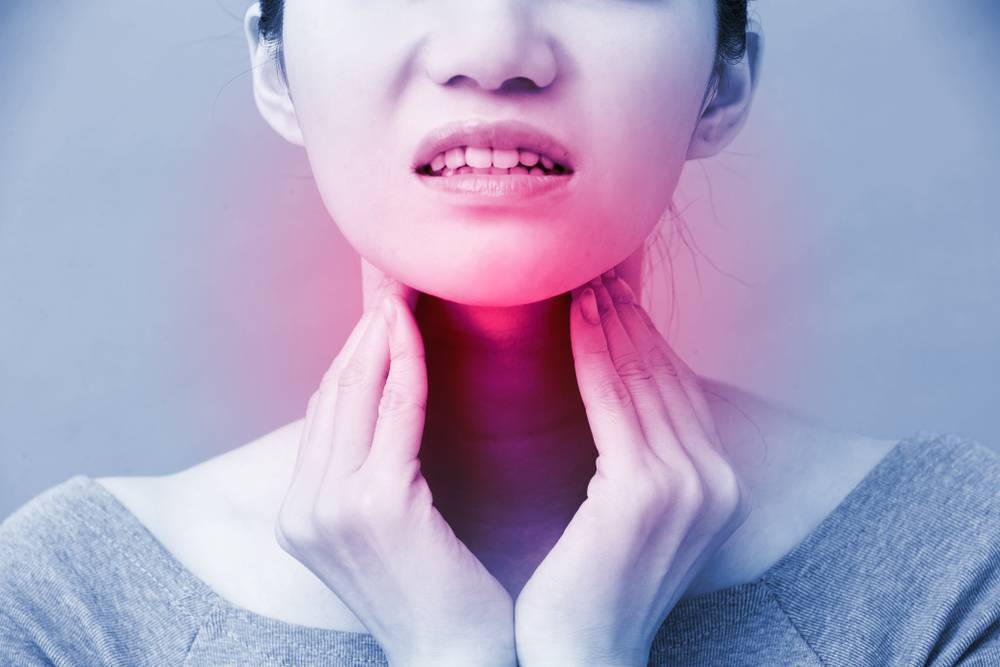Nasopharyngeal Cancer (NPC) is rare cancer affecting the nasopharynx area (upper part of the throat behind the nose). 80% of cases are reported from Asia.
The nostrils lead into the nasopharynx and an opening on each side of the nasopharynx leads into the ear. Cancer usually begins in the squamous cells lining the nasopharynx. NPC is a rare condition in the United States and more common in Southeast Asia.

Figure: Anatomy of pharynx
Prevalence in Asian countries
NPC is native to Southeast Asia and about 80% of cases are reported from Asia while only 5% are found in Europe. The incidence of NPC globally is 1.2 per 100,000 (1.7/per 100,000 in men and 0.7/per 100,000 in women) whereas the prevalence rate in Southeast Asia is 15–50 cases per 100,000 people. The highest incidence and mortality rates are found in Malaysia, Singapore, Indonesia, Vietnam, and Brunei. Most incidences of nasopharyngeal cancer are reported between the age of 50-60 while the mortality rate is highest above 85 years.
NPC relapse rates are high. The primary treatment strategy for NPC is radiotherapy with or without chemotherapy. Approximately 7% to 15% of patients have persistent or recurrent disease after radical radiotherapy, and 10% to 40% of patients experience recurrence within 1 to 2 years after initial treatment.
Symptoms of NPC
Symptoms of nasopharyngeal cancer are often confused with other conditions and are not quite apparent until cancer progresses to an advanced stage. The noticeable symptoms observed in the later stages of cancer are;
- Lump in the neck due to swollen lymph node
- Blood in saliva
- Nosebleeds
- Nasal congestion
- Ear infections
- Hearing loss
- Sore throat
- Headache
- Tinnitus
- Diplopia (double vision)
- Numbness in the bottom part of the face
Causes and Risk factors
The exact causes of nasopharyngeal cancer are not known, however, some risk factors predispose to its development:
- Previous infection with Epstein-Barr virus (EBV) may subject cells to cancerous changes
- Gender – Males are 2 to 3 times more likely than females to get NPC
- Dietary habits – eating foods high in salt and preservatives e.g. cured meats/fish, pickled vegetables
- Genetics:
- Persons with first-degree relatives who had NPC are 20-25 times more likely to develop NPC
- Being of South Chinese or North African descent
- Smoking
- Exposure to formaldehyde or wood dust
Preventive Measures
- Awareness programs
- Early diagnosis and treatment
- Change of lifestyle
- Change of dietary habits
Treatments for NPC
The most common treatment regimens for cancer are;
- Radiation therapy: High-energy X-rays or other types of radiation are used to kill cancer cells or prevent their growth.
- Chemotherapy: Prevents the growth of cancer cells by using drugs. The drugs either kill the cells or prevent them from multiplying.
- Surgery: Sometimes when the cancer is too malignant to be treated with either radiation or chemotherapy, surgery is suggested to remove the entire tumour. However, it is mostly accompanied by radiation or chemotherapy to prevent further growth of tumours.
Due to incidences of relapse, newer therapies and treatment regimens are underway.

